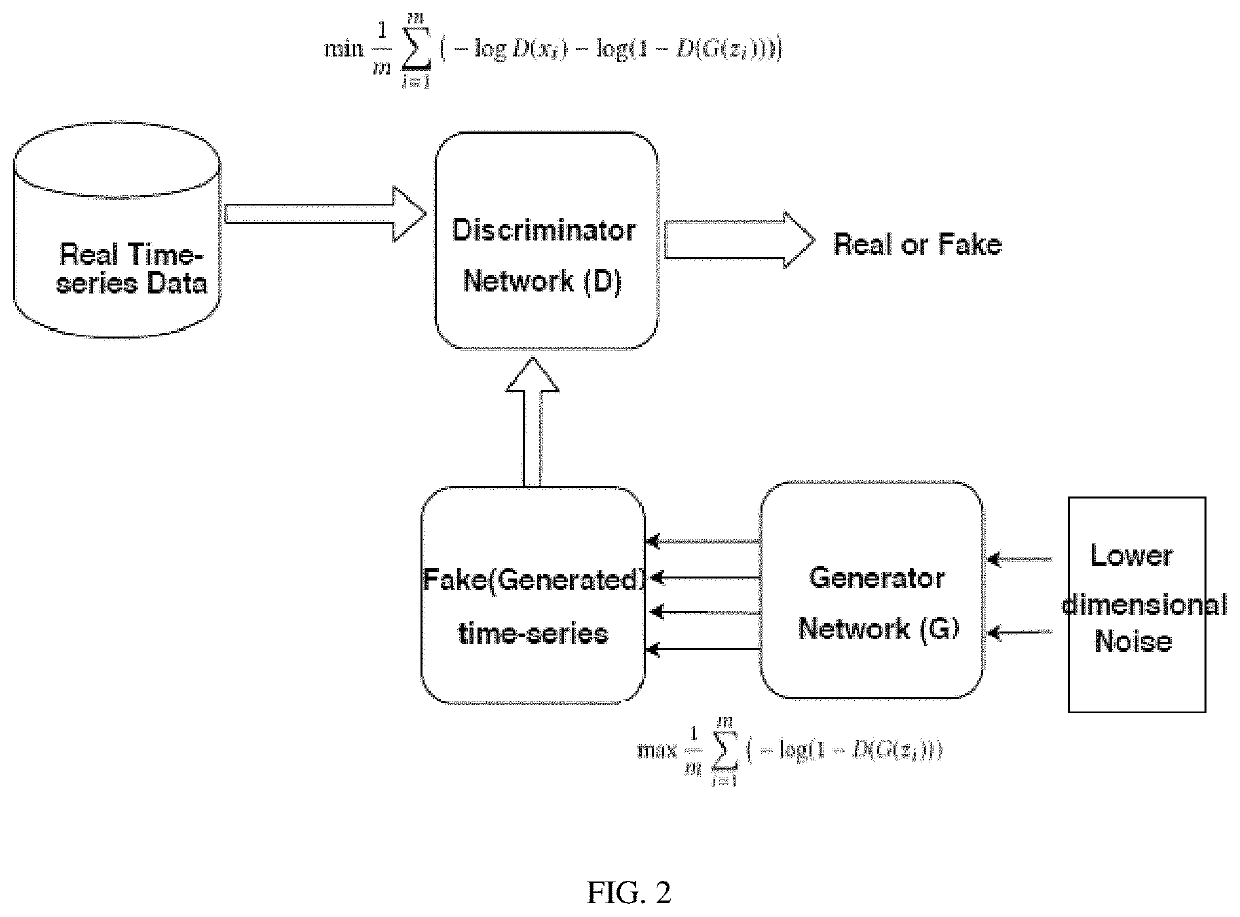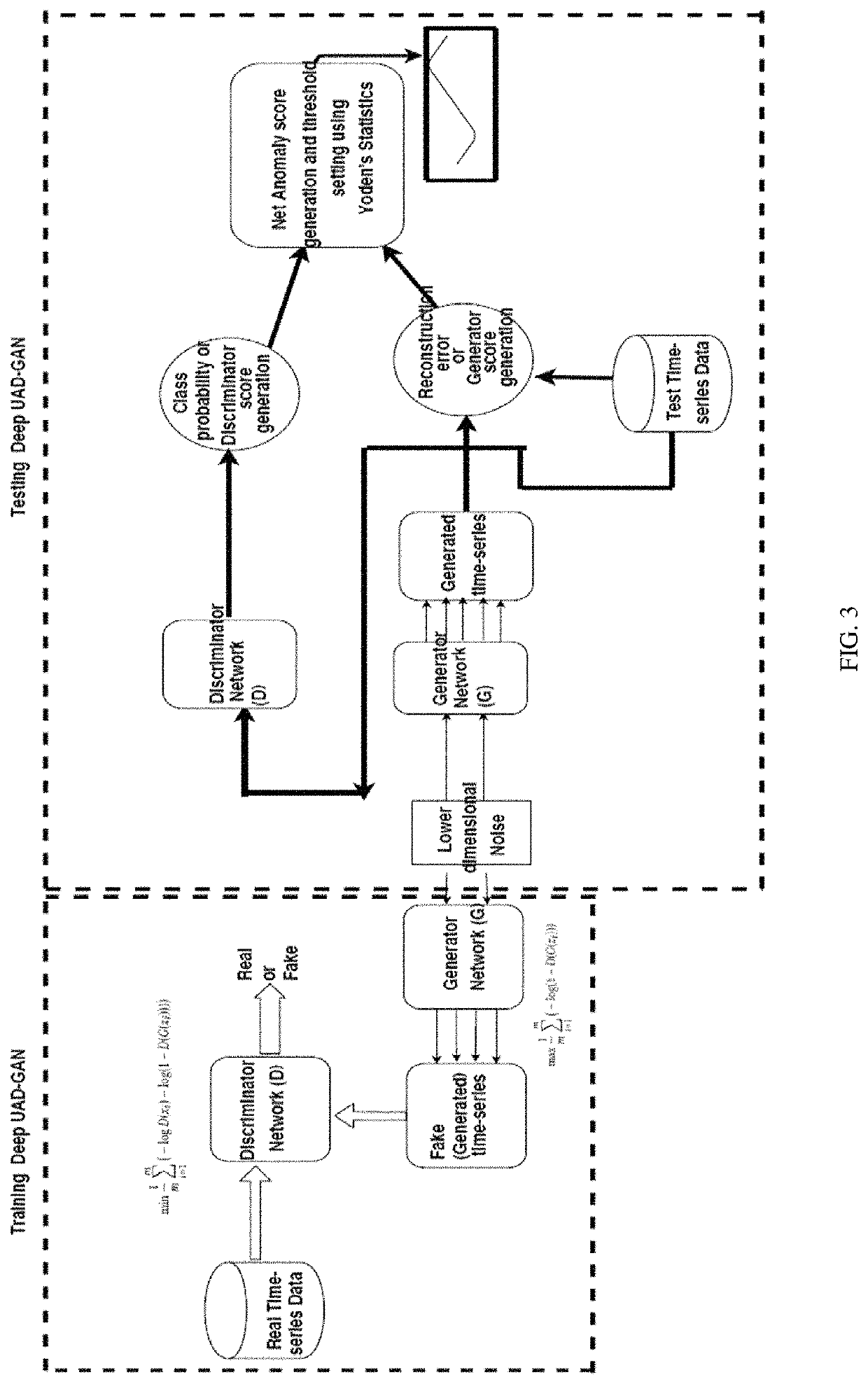System and method for unsupervised anomaly detection
a technology of anomaly detection and system, applied in the field of systems and methods, can solve the problems of difficult task of detecting anomalies, difficult and most of the time impossible for an ai engineer to obtain examples of labeled anomalous data, and anomalies can occur in data, so as to improve the true positive rate of the model, improve the accuracy of the model, and improve the effect of the true positive ra
- Summary
- Abstract
- Description
- Claims
- Application Information
AI Technical Summary
Benefits of technology
Problems solved by technology
Method used
Image
Examples
example 1
the Deep-UAD System in a Network of a Singapore Based Water Utility Company
[0104]The data set from a Singapore based water utility company (SWaT) contains the data collected from the test-bed with 11 days of continuous operation. This data set consisted of 7 days data was collected under normal operation, along with 4 days of data with attack scenarios. Details of the SWaT data set is shown in Table 1. More detail on the SWaT data-set can be found at, https: / / itrust.sutd.edu.sg / testbeds / secure-water-treatment-swat / .
[0105]
TABLE 1general information about the SWaT data setS. NumberItemsSWaT1Variables512Attacks363Attack Duration (Mins.)2-2.54Training (Normal) data size4968005Test-data size (data with attack)4499146Amount of normal data (in %)88.02
[0106]Tables 2a and 2b represent the results for applying different GAN architectures with binary cross-entropy loss and least square respectively to the SWaT data set to detect anomalies. In tables 2a and 2b, the names of the model are in the...
example 2
the Deep-UAD System in a Water Distribution (WADI) Data Set
[0112]Similar to the SWaT data set, the data collected from the water distribution test-bed with 16 days of continuous operation, out of which data of 14 days was collected under normal operation and data for 2 days was collected with attack scenarios. Details of the WADI data set is shown in Table 4. More details on the WADI data-set can be found on https: / / itrust.sutd.edu.sg / testbeds / water-distribution-wadi /
[0113]
TABLE 4general information about the WADI data setS. NumberItemsWDAI1Variables1032Attacks153Attack Duration (Mins.)1.5-304Training (Normal) data size10487515Test-data size (data with attack)1728016Amount of normal data (in %)94.01
[0114]Tables 5a and 5b show the detailed results for the WADI data set. This data set has very few instances of actual attack scenarios. The Deep-UAD-GAN shows the recall of 70.55% when models are trained using least-squares cost function. Accuracy improves when the models are trained wit...
PUM
 Login to View More
Login to View More Abstract
Description
Claims
Application Information
 Login to View More
Login to View More - R&D
- Intellectual Property
- Life Sciences
- Materials
- Tech Scout
- Unparalleled Data Quality
- Higher Quality Content
- 60% Fewer Hallucinations
Browse by: Latest US Patents, China's latest patents, Technical Efficacy Thesaurus, Application Domain, Technology Topic, Popular Technical Reports.
© 2025 PatSnap. All rights reserved.Legal|Privacy policy|Modern Slavery Act Transparency Statement|Sitemap|About US| Contact US: help@patsnap.com



